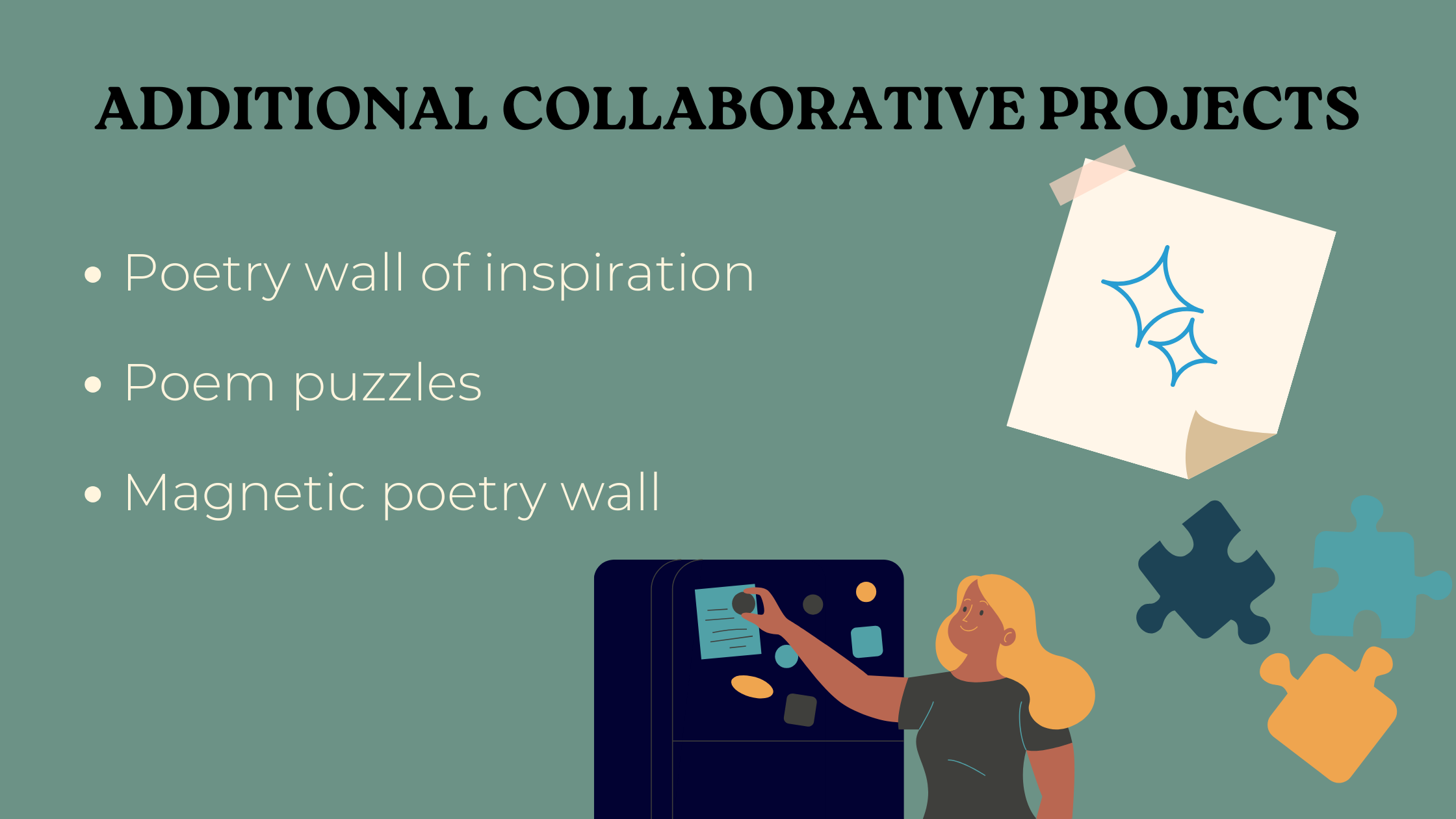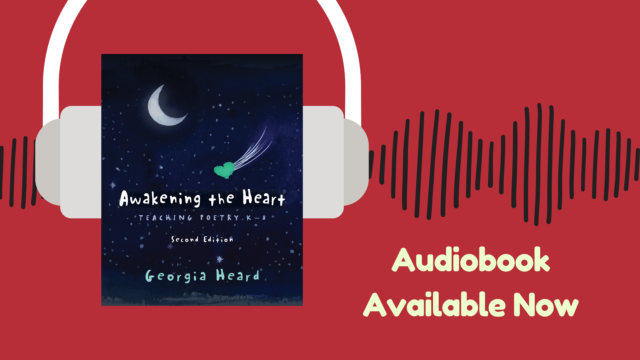
The following is an adapted excerpt from Georgia Heard’s Awakening the Heart, 2e.
***
In addition to collaborative poetry reading projects that promote a sense of community in the classroom, collaborative writing projects can also support the development of a cohesive and supportive classroom environment.
Collaborative Poetry
Collaborative writing projects can be a wonderful way to encourage students to work together and share ideas while also developing their poetic skills. Collaborative poems involve the participation of multiple poets—pairs, small groups, or a whole class. The collaborators might be from one class, multiple classes, or different grade levels. For example, students can work together to create a poetry mural, write a collective epic poem, or plan a spoken-word performance.
Third grade teacher Megan Sloan infuses poetry into her classroom throughout the year. She told me that one of her third graders, Barrett, organized a poem club independently during their special read, write, and draw time. (Megan gives the students this ten-minute quiet time right after lunch and recess to help them settle in and get ready for their math lesson.) She walked outside in the hallway and saw that Barrett had posted a sign-up sheet on an easel for the club. Seven students had already signed up. The sign included two of the poem club’s goals: to make a poem about anything—person, place, or thing—and to give ideas of what they could write about to help people when they needed it.
Shouldn’t this be our objective? To foster classrooms and communities of care around poetry where students independently form poem clubs to write and help others grow a love of poetry.
Additional Collaborative Projects

- Poetry wall of inspiration: Create a communal classroom or school poetry wall where students, teachers, and staff members can contribute lines and words perhaps around a specific theme. If it’s a school wall, encourage everyone in the school community to collaborate in the ongoing creation of this poem.
- Poem puzzles: Design a set of poem puzzles where you separate lines or stanzas of different poems and display them as individual pieces. Students and visitors can arrange the puzzle pieces to re-create the original poems or mix and match to create new poetic combinations.
- Magnetic poetry wall: Transform a section of a wall into a magnetic poetry station. Students can write individual words or short phrases from poems on small magnets or sticky-note sentence strips and arrange them on the wall to create their own poems.
***
Listen to Georgia Heard on the Heinemann podcast discuss why you should and how you can make time for poetry in your classroom.
Awakening the Heart, Second Edition is now available!
How do we infuse poetry into our classrooms? This new edition of Awakening the Heart stands on the shoulders of the original edition as a roadmap for answering this question. It aims to keep the heart in teaching poetry and to help us realize that poems are so much more than a genre student or a way to analyze text for a reading test. Throughout the text, Georgia Heard threads the voices of young and well-known poets together to illustrate the power and joy of poetry. It offers useful tools, examples, and stories for teachers and instructors to translate into their own communities.



